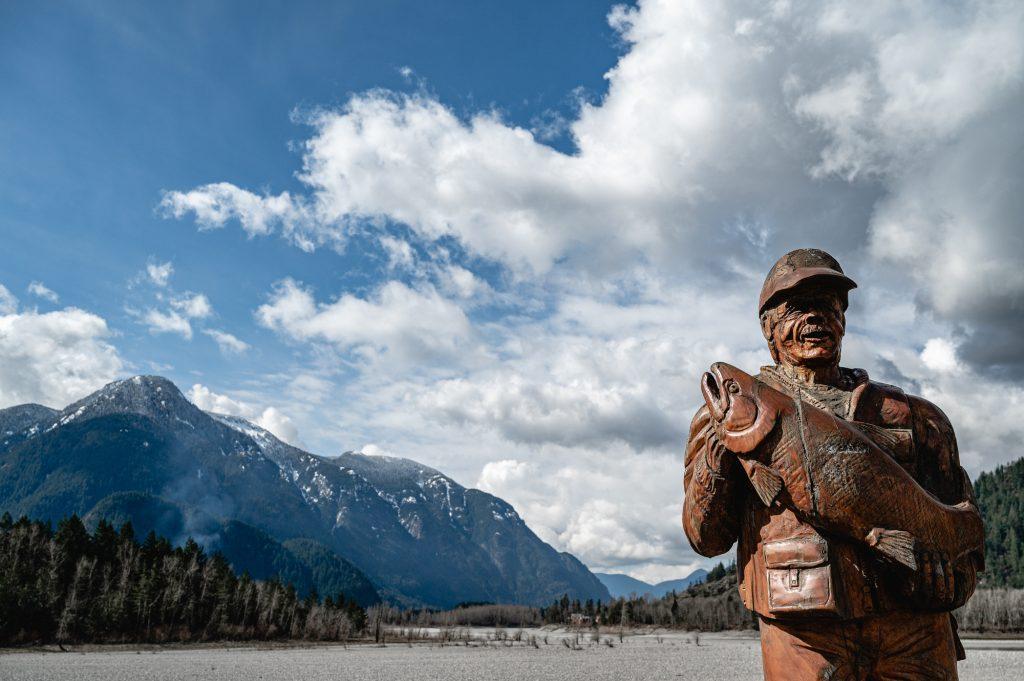Interesting stories and experiences from the Crowsnest Highway region

More Than a Road: Discovering Culture and Connection Along the Crowsnest Highway
Stretching across southern British Columbia and into Alberta, Highway 3, better known as the Crowsnest Highway, is more than just a scenic route through mountains and valleys. It’s a living corridor of culture, history, and resilience. For travellers who take the time to look beyond the asphalt and mountain views, the Crowsnest reveals stories that have shaped generations of people and landscapes.
This isn’t just a road trip. It’s a journey into connection.
The Crowsnest Highway travels through the traditional, ancestral, and unceded territories of the Syilx (Okanagan), Ktunaxa, Secwépemc, and Niitsitapi (Blackfoot) Peoples, as well as the Métis, who have long lived, traded, and travelled along these routes. These Nations have cared for the land for millennia, and their presence continues today in the stories, stewardship, and cultural markers that line the way.
Indigenous Culture and Stewardship
For thousands of years, Indigenous Peoples have used the passes and valleys along today’s Highway 3 as travel and trade routes. Archaeological evidence and oral histories point to ancient campsites, hunting grounds, and gathering areas. Some places still hold pictographs and sacred sites where visitors are asked to approach with respect.
Travellers today can engage with this history through interpretive signage, cultural centres, and guided experiences led by Indigenous hosts. Indigenous teachings highlight the importance of balance and respect for the land, simple reminders that travel here should be about listening as much as exploring.
Stories of Settlement and Resilience
The Crowsnest Highway also tells the story of waves of settlers who arrived in the 19th and 20th centuries. Miners, loggers, and farmers from Italy, Poland, Ukraine, China, Japan, and beyond sought opportunity in the valleys and mountains.
Evidence of their lives remains all along the route: historic main streets, preserved mining towns, and cultural landmarks that reflect a patchwork of traditions. From orchards passed down through generations to the remnants of boomtowns, the Crowsnest Highway carries the memory of people who worked hard to carve out a life in rugged terrain.
The valley today continues to be a welcoming and accepting place, embracing diversity in all forms, including its 2SLGBTQIA+ residents and visitors. This spirit of openness enriches every aspect of life here and creates space for meaningful cultural exchange.
Living History Along the Highway
Driving the Crowsnest Highway is like opening a storybook written across the land. From ghost towns and mining camps to Indigenous gathering places and roadside fruit stands, every stop adds a new layer to the journey.
Your adventure begins in Hope, where the Fraser Canyon meets the mountains. Here, history is carved into the landscape with Indigenous stories, early trading routes, and the resilience of communities shaped by rivers and railways.
Continuing east, the Similkameen Valley reveals its heritage through small towns like Princeton, Keremeos, and Hedley. At the Grist Mill & Gardens in Keremeos, you can see B.C.’s last working waterwheel flour mill, wander heirloom gardens, and taste bread baked with freshly ground flour. In Hedley, the Snaza’ist Discovery Centre shares the deep traditions of the Similamix People, while the Hedley Museum and the famous Mascot Mine site tell stories of the gold rush era. Together, these experiences highlight how Indigenous stewardship and immigrant resilience shaped the valley.
As the highway winds toward Osoyoos, history meets abundance. This region, home to one of Canada’s warmest climates, has long been a gathering place, from the Syilx Okanagan Nation to the early orchardists and winemakers. Visitors can explore local museums, walk interpretive trails, and taste the harvest of a land that has fed communities for generations.
The journey culminates in Boundary Country, where towns like Greenwood, Midway, and Christina Lake preserve the echoes of mining, ranching, and rail. Once a booming smelter town, Greenwood is now Canada’s smallest city, rich with heritage buildings and stories of resilience. In Midway, the Kettle River Museum marks the historic “Gateway to the Kootenays,” while Christina Lake welcomes travellers with a blend of lakeside leisure and deep-rooted community history.
Together, these stops along the Crowsnest Highway form a living corridor of culture and connection—reminding travellers that every bend in the road carries a story worth discovering.
Food and Cultural Connection
The Crowsnest Highway is also a route of flavours. In B.C.’s southern valleys, roadside fruit stands, wineries, and cideries showcase the agricultural traditions of generations. Cross into Alberta, and you’ll find hearty mountain cafés, craft breweries, and family-owned restaurants serving recipes passed down through immigrant families.
Stopping to eat along Highway 3 isn’t just about refuelling—it’s about tasting the land and the stories of those who call it home.
Responsible Travel Tips
The best way to experience the Crowsnest Highway is thoughtfully. Support local businesses, visit cultural sites respectfully, and slow down to appreciate the stories the land is sharing.
When exploring heritage sites or sacred Indigenous places, follow signage, stay on marked paths, and avoid disturbing artifacts. Take the time to ask questions, listen to stories, and respect that some places may be meant for reflection rather than photographs.
Here are a few mindful practices for the journey:
- Choose local: Buy from roadside markets, artisan shops, and family-run cafés.
- Be curious, be humble: When asking about history or culture, approach with respect.
- Pause and reflect: The road offers more than views—its stories reveal themselves when we slow down.
A Journey That Stays With You
The Crowsnest Highway may first catch your eye with its dramatic scenery—mountain peaks, winding rivers, and fertile valleys. But its deepest impact comes from the connections you make along the way. Each town, each trail, and each meal tells a story, woven into a broader narrative of resilience and culture.
Next time you drive Highway 3, don’t just keep your eyes on the horizon. Stop, listen, and discover the stories that run deeper than the road itself.
